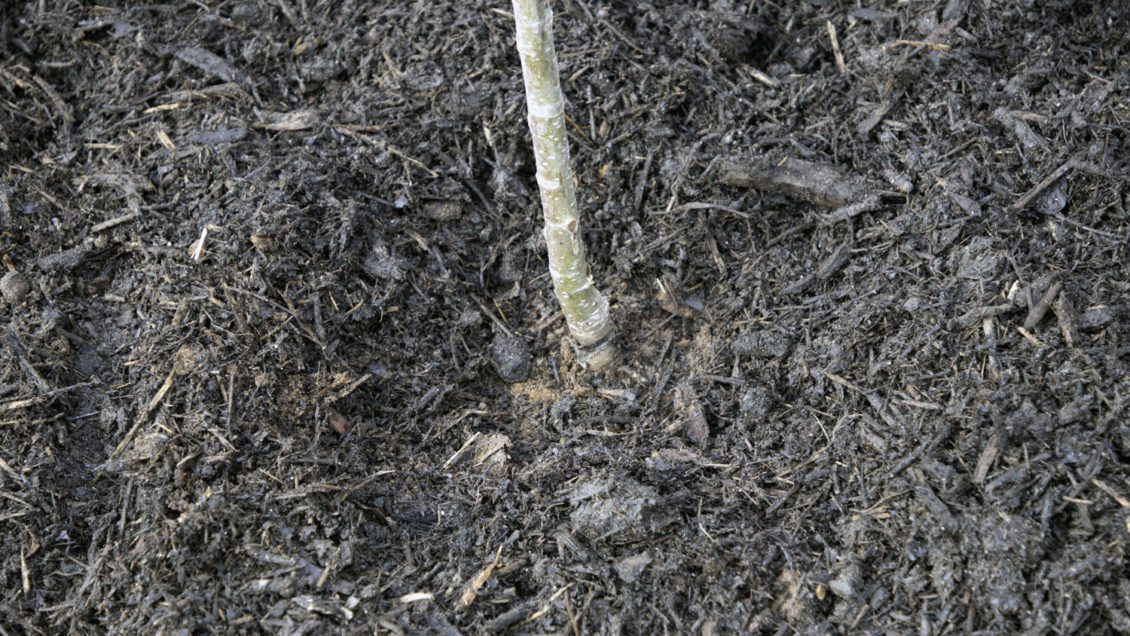
CLEMSON, South Carolina – As gloomy clouds slinked away and sunlight filled the sky, spirits were bright Wednesday afternoon on Clemson’s main campus when a living slice of history found a new home in an epicenter of scientific achievement.
A public ceremony marked the planting of a direct descendant of the Newton Apple Tree in a patch of soil surrounded by three buildings – Kinard, Martin and Long halls – that are teeming with researchers.
Included among the 60 or so in attendance were department chair Sean Brittain, professor Endre Takacs and doctoral candidate Bishwambhar Sengupta from the College of Science’s department of physics and astronomy.
Sengupta spent months securing the germplasm of the tree for Clemson.

“I managed to find the USDA repository in Geneva (New York), where they have about 5,000 apple trees on their farm,” Sengupta said during the ceremony. “One of them was from Newton’s tree. And that is where we received our genetic material.”
“I believe that this tree is a great symbol for the College of Science here at Clemson,” Takacs added. “It has healthy roots that originate from a community here in the Carolinas. But the branch is the direct descendant of the famous tree that initiated a great scientific idea. This tree is a living symbol of the slogan of our College – locally relevant and globally impactful.”
Clemson’s tree, which is about 7 feet tall and as thin as a stick, is not expected to produce fruit for at least three years. But as the time passes from season to season, it should grow many times larger. Also, it is genetically ancient, which means it will require extra-special care.
“The tree we’re planting – at least the top of it – is a molecular clone with the same genetic material as the tree that Sir Isaac Newton sat under in the 1600s when a falling apple caused him to consider the force of gravity,” said Julia Frugoli, associate dean for inclusive excellence and graduate education in the College of Science and a longtime plant geneticist. “Students of science – especially those sweating it out in calculus and physics – have Newton to thank for the equations that explain why the world works the way it does, at least on a large scale.”
Clemson University’s landscaping services prepped the location and planted the tree, which included testing and making amendments to the soil.

“This whole project has been a blessing for me,” said Tommy Fallaw, director of landscaping services. “It’s been a joy to be a part of it. And I think the best part is that it has brought people together who normally might never interact.”
For several centuries, Newton (1642-1727) has been regarded as the father of modern physics. He conceived that the same force that caused the apple to fall straight down from the tree was also the force that governed the motion of the moon and planets. But his achievements in the physical sciences were matched by his innovations in mathematical research, and he is credited by many as the creator of calculus, the branch of mathematics upon which modern science is based.
“Isaac Newton was a pivotal figure in math and physics,” Brittain said. “So, it’s a great honor to have this memorial to his inspirations. He was not just a brilliant mathematician and a physicist who set the agenda for 350 years, he was also a true renaissance man. He made contributions in philosophy and theology – he was all over the place. When we think about interdisciplinary research, about breaking out of our silos, Newton is someone we can look to who didn’t stay in his silo.”
For an earlier version of this story, click here.
Get in touch and we will connect you with the author or another expert.
Or email us at news@clemson.edu

